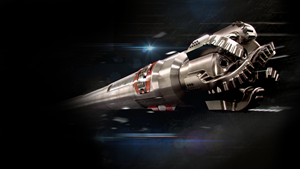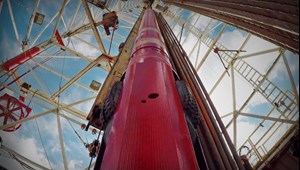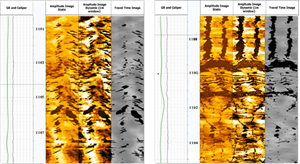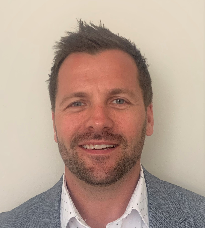Extracting everything: How innovative drilling technology answers the demands of the modern energy industry
When the search for additional hydrocarbon resources compelled operators to rethink conventional drilling ideas, non-vertical wellbores were born. To reach these additional deposits, operators needed a means to drill in a particular direction. Traditionally operating from a single surface location and established vertical wellbores, early versions of directional drilling deployed non-rotating bent subs to divert the drill bit, aiming it toward untapped resources in the formations. The unconventional horizontal well market quickly became the answer to the question of how to maintain the demands of the energy industry in the modern marketplace.
As good as conventional directional drilling became, it still lacked the precision and reliability required to drill extended-reach wells and realize a reservoir’s true potential. These long, tortuous horizontal wells often need convoluted trajectories to bore through complex formations and make contact with targeted hydrocarbons. To address these new pressures, Weatherford innovated and developed a fit-for-purpose tool specifically geared to extending the viability of oil and gas fields and doing so in a more reliable manner.
RSS combines high-performance drilling with full directional control. Weatherford developed the Magnus® rotary-steerable system (RSS), Fig. 1. Using a push-the-bit design, the RSS combines reliable, high-performance drilling with precise directional control to enable operators to extend the performance of each drilling run, providing faster drilling, better wellbores, and high-quality measurements.

The rugged design of the Magnus RSS makes it possible to remain in the wellbore for extended periods of time and keep costs as low as possible. Often, most drilling operations can be performed in one run. The RSS features a streamlined design with minimal bottomhole assembly (BHA) stabilization, a fully rotating bias unit, and an optimized junk slot area to reduce the risk of expensive stuck pipe events. The metal-on-metal pistol seals in the mud-actuated pad enhances mechanical integrity in high-pressure, harsh drilling environments and improves overall system stability.
Three independent pads and valves deliver proportional control and enable the pads to fully retract for tight-hole applications, reaming, or cement/shoe drilling. The three pads actively manage the direction of the bit through the entire drilling process and are only activated as needed to maintain the well trajectory. This selective pad activation is what enables proportional steering and provides drastically improved wellbore quality by eliminating unnecessary pad activations. This independence serves as a redundant system in the event of pad or valve failure to improve reliability.
The Magnus RSS can use standard drill bit designs, enabling any operator anywhere to avoid lengthy lead times and reduce the need for additional inventory. A proportional control system in the RSS makes efficient drilling adjustments to minimize tortuosity, providing a smooth, high-quality wellbore that can reduce the costs of future well-construction operations. In addition, with a high-dogleg capability of up to 10°/100 ft, the RSS can build the curve section, eliminate correction runs, and contact the pay zone sooner. An electronic control system samples data at rapid rates to confirm the toolface orientation and deliver full control.
Accurate, real-time information, supplied by advanced LWD tools, help steer the RSS with real-time near-bit data for improved overall productivity. Continuous azimuthal gamma ray and inclination measurements, taken in as little as 6 ft behind the bit, enable effective wellbore placement and geosteering changes to stay in the target zones. Innovative electronic systems and autopilot functionality, including the capacity of self-regulated adjustments, provide closed-loop control for course correction during drilling. A real-time bidirectional communication system operates without interrupting drilling, sending control signals to the RSS and then verifying the information so that steering adjustments immediately take effect.
To prepare the wellbore for installation of contingency liners and casing or completions equipment, operators need to underream the hole. Optimally, and to keep costs low, reaming and directional drilling should be performed in the same run. To meet operators’ desire for hole-enlargement-while-drilling, Weatherford engineers developed the RipTide drilling reamer. Often coupled with the RSS, the RipTide reamer drills a smooth, concentric underreamed hole to TD in one trip, Fig. 2. The drilling reamer enlarges wellbores up to 44% beyond bit diameter and deliver high-quality, completion-ready boreholes.

Featuring a mass-balanced, triple cutter-block arrangement that works with the RSS to minimize vibrations while drilling, the Riptide reamer can be activated in multiple methods: a mechanical ball-drop system, pressure-cycle activation, or electronic radio-frequency identification (RFID) tags. The RFID system leads the industry in delivering unlimited downhole activation cycles, full through-bore internal diameter, and gives operators the ability to place multiple reamers in the drilling assembly.
CASE STUDIES
Offshore Mexico. The RFID system proved itself a key component to a successful operation in Mexico. In an offshore field, an operator needed to drill and enlarge a 2,657-ft thick salt dome from the casing shoe. Making the operation more problematic were the frequent stuck pipe issues typical for this field, especially with hole diameters from 12¼-in. to 14¾-in. In previous offset runs, the operator required two trips to achieve the desired results.
Engineers recommended the RipTide reamer be incorporated into the drilling assembly and deployed into the wellbore. Using RFID tags, the drilling reamer was activated below the casing shoe and enlarged the salt dome interval. With the enlargement complete, the underreamer was deactivated via RFID tags. This enabled the operator to close the section while drilling conventionally to the target depth without additional trips.
By choosing the unlimited, on-demand activation and deactivation feature of the RFID reamer, the operator optimized downhole time and reduced exposure time for the salt formation. The job was completed in one run, saving four days of rig time and approximately $680,000 (assuming a daily cost of $170,000).
Mexico. In another Mexican application, an operator required a new borehole through a salt dome with a heavy oil-based mud of 2.19 gr/cc (18.3ppg). The drilling fluid contained high solids content (above 40%) and was mainly designed to drill in the salt formation despite recurrent emulsion instability problems. The operator typically experienced tool failures associated with the high concentration of solid, stuck pipes in the salt formation, and high drilling torque and torsional vibrations. The best course of action would be to deploy an RSS power with batteries to overcome previous failures related to high solids content. Additionally, a multi-activation drilling reamer would not only enlarge the salt formation and reduce the risk of stuck pipe, but also be deactivated after drilling the salt formation to maximize rate of penetration (ROP).
The RSS met the requirements for this job, specifically with the flexible power capability that enables the tool to operate using only battery power to enhance the flow inside the tools with no restrictions caused by turbine propellers, often the cause of premature failures due to solids in offset wells. Additionally, the RSS can be set in “steering off” mode, enabling the operator to drill through zones with high vibrations while minimizing tool wear and improving hole quality. A crucial factor in the success of this operation was the Centro™ well construction optimization platform, where all drilling data were collected in real time and the drilling parameters were monitored and optimized by engineers located in the real-time operating center.
Weatherford completed the section in a single run, saving four days and approximately $165,000. The RSS effectively overcame all the challenges related to lateral vibrations and high mud solids that had caused turbine impeller pack-off on other RSS tools. The RipTide reamer enlarged the section with an ROP of 67.68 ft/hr, 126% higher than expected. The enlargement of the salt section prevented all stuck pipe events, challenges that cost the operator hundreds of thousands of dollars in lost time on previous wells.
Turkey. For an operator in Turkey, the challenge zeroed in on logging. Because of borehole conditions in the limestone formation, conventional wireline tools were not able to log a vertical section from 9,255 ft to 10,541 ft. As such, the operator had no way of obtaining high-resolution borehole image data to identify fractures in a well filled with 14.84 ppg (1.78 g/cc) oil-based mud.
Weatherford engineers recommended a suite of LWD tools anchored by the UltraWave® ultrasonic imager, Fig. 3. The imager provides high-resolution borehole images and borehole caliper measurements while drilling in oil- or water-based mud systems. It records the amplitude and travel time of ultrasonic acoustic waves reflected from the borehole wall. These measurements are recorded in 128 azimuthal sectors around the circumference of the borehole, providing high-resolution, 360°, borehole images while drilling.

The logging suite also included a real-time telemetry system, an MWD hostile-environment-logging system, an azimuthal gamma ray sensor, a resistivity tool, and a sonic tool. The LWD tools were deployed into the wellbore and the UltraWave imager acquired high-resolution amplitude images for reservoir and evaluation. The other LWD tools collected gamma ray, resistivity and sonic data, all of which made it possible to directly identify fractures and other features in the hostile environment of the wellbore.
Advanced technology produces long-lasting results. To extract all possible hydrocarbon assets from reservoirs, operators must overcome complex well geometries to drill extended-reach, unconventional horizontal wells. Directional drilling technology—like the innovative Magnus RSS and RipTide drilling reamer as steered by advanced LWD technology—can improve overall drilling efficiencies and lower well construction costs. These tools and services enable operators to stay downhole longer, in harsher operating environments and deliver long-lasting, productive results over the life of the well




- Coiled tubing drilling’s role in the energy transition (March 2024)
- Digital tool kit enhances real-time decision-making to improve drilling efficiency and performance (February 2024)
- E&P outside the U.S. maintains a disciplined pace (February 2024)
- U.S. operators reduce activity as crude prices plunge (February 2024)
- Drilling advances (January 2024)
- Driving MPD adoption with performance-enhancing technologies (January 2024)
- Applying ultra-deep LWD resistivity technology successfully in a SAGD operation (May 2019)
- Adoption of wireless intelligent completions advances (May 2019)
- Majors double down as takeaway crunch eases (April 2019)
- What’s new in well logging and formation evaluation (April 2019)
- Qualification of a 20,000-psi subsea BOP: A collaborative approach (February 2019)
- ConocoPhillips’ Greg Leveille sees rapid trajectory of technical advancement continuing (February 2019)


